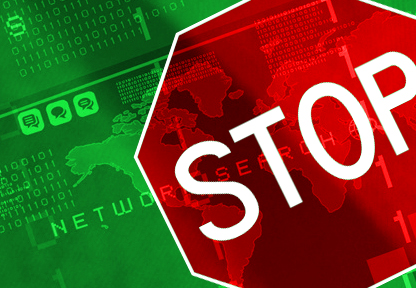There’s a problem in the business world; it shows up in many different forms. The idea that a single change or a single solution is enough is a trap. In cybersecurity, forcing employees to try harder isn’t enough, although that may be needed. That “work harder” directive may fail if employees have poor tools or training. For high-value areas such as security, you need a multi-tier strategy.
Why You Need Multi-tier Cybersecurity
In cybersecurity, there’s an arms race between defenders and attackers. Just think about the incentives that cybersecurity attackers have. There’s the potential for glory and riches if they pull off a successful attack. You don’t even need to assemble a dream team of fellow criminals, as seen in “Ocean’s Eleven.” Instead, hackers can rent hacking resources to carry out their attacks.
Now, what are your options to defend yourself against incoming waves of cyber attacks? We recommend developing a multi-tier cybersecurity approach. First, you start with training and guidance for employees in security. Second, you equip people with easy-to-use security tools. Finally, you track and monitor your defenses continuously to detect improvement opportunities. Used together, this multi-tier approach will raise the odds of defeating attacks and limiting the effect of attacks that do get through.
Testing Your Cybersecurity Defenses
Speaking of continuous improvement, how do you apply this concept to your cybersecurity program? We could tell you to hire security consultants. That’s one tried-and-true way to get an expert evaluation of your program. However, that approach may not be feasible for your budget. Instead, you need other ideas to execute in the next month. Here are some testing techniques you can put into action right away.
- The new hire test: This testing approach requires cooperation with human resources. With this technique, ask HR to add a cybersecurity quiz for new hires. By testing new hires, you’ll have a better understanding of the positive and negative security habits new hires bring to the table. Next, you’ll need to take those insights and use them to improve your training program.
- The post-training test: Does corporate security training work? You won’t know unless you survey participants. To evaluate your training, find the next cybersecurity training for employees on the schedule. Work with the trainer to develop post-training testing. When you find areas with low scores, ask your people managers to review those areas with your staff.
- Phishing email campaign: Is it smart to attempt to fool your employees? Yes! We recommend occasionally sending out phishing email campaigns. This technique is best used within 4 to 8 weeks of completing a cybersecurity training program. With that timing, you can assess whether employees can put training into effect. If a large number of staff members fail the test, your training program is probably flawed.
- Penetration testing: Evaluating yourself in cybersecurity will always be difficult. That’s why some companies use outside experts to conduct penetration testing. It’s one of the best ways to discover and reduce vulnerabilities in your environment.
- Tool evaluation: Keeping up with cybersecurity requirements just gets more difficult. There’s no reason to admit defeat though! One way to improve further is to periodically evaluate your security tools and software. If you adopt better tools, it’ll be easier to maintain security.
Ways to Use Identity Management to Improve Cybersecurity at Every Level
Why should you bother improving identity management? It tends to be a weak point in building a robust cybersecurity program. As you add more applications to your environment, and more employees, tracking and managing access becomes difficult. You’ll see managers at large banks manually reviewing spreadsheets listing user IDs for the staff. This kind of manual review process isn’t a sustainable practice, even if you have dedicated managers.
What happens if your firewalls fail or phishing emails make it through? With strong identity management in place, you’ll have another tier of defense in place. It means that a hacked account won’t be able to create new user accounts. It’ll be tough to break into sensitive systems. Even better, you’ll have more breathing room to discover problems and solve them.
How to Overcome Identity Management Implementation Challenges
Some of you may be wondering: “An identity management software solution sounds good, but I can’t get budget for that.” We get it; adding a new cybersecurity solution is tough! To address that situation, start by identifying what’s holding you back. Do any of these problems look familiar?
- Crisis-driven security outlook: In this situation, cybersecurity decision-making is reactive. Wait until the crisis subsides before you seek improvement. You can’t wait forever!
- Business case rejection: When the executives tell you that there’s no business case for identity management, you need to go back to the drawing board. Your problem may be a lack of stakeholder support. Find out how to win procurement support.
- Identity management has a bad reputation: Recall our example above of the managers carrying out manual reviews of user IDs. If that has been your organization’s practice, you’re in for a tough slog. You’ll need to find an identity management software solution that provides reliable automation.
- Employee resistance to security programs: Like it or not, employee participation is crucial to identity management success. Resistance to security changes is a signal that you need to find ways to improve the employee experience. For example, implement single sign-on so employees have fewer passwords to remember.
Optimize Your Multi-tier Cybersecurity Program – A Never-ending Project
Setting up a multi-tier cybersecurity program is a major accomplishment. Alas, that’s only the start of the journey. Attackers will keep coming up with new ideas. One month, denial of service attacks will hit you. Another month, someone may hack your API and copy user data. The problems never stop, and you probably cannot prevent every attack. However, you can dramatically reduce the impact of security incidents with multiple defenses. Identity management and multi-factor authentication need to be part of your evolving defenses.




